Places of Interest
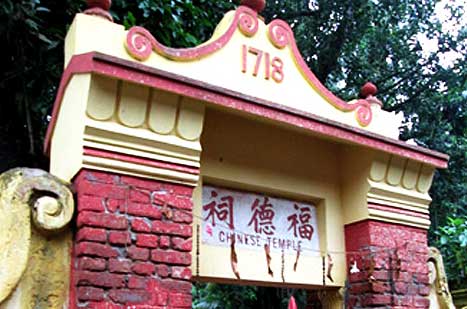
Achipur Near Bawali 
Achipur is the site where one of the earliest sugar mills in India was set up in 1770’s by a Chinese businessman Tong Achew. The then Governor General Warren Hastings offered land to Tong Achew to set up his sugar factory. Chinese workers were brought by Achew to work in his factory. The Chinese population of Kolkata owes its origins mostly to the workers and associates of Tong Achew. The tomb of Tong Achew and his Chinese Temple built in 1718 still stands at Achipur.
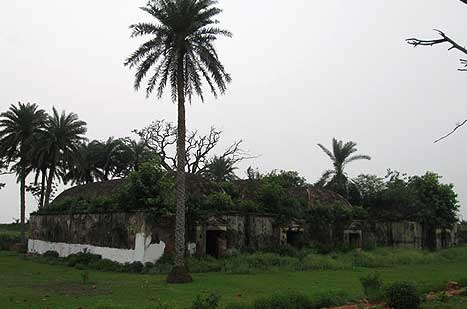
Barood Ghar near Bawali 
Ships navigating towards Kolkata from Bay of Bengal carrying gunpowder had to deposit their stock in these storehouses or Barood Ghar located beside River Ganges. During British rule, ships were only allowed to carry 100 lbs of gunpowder with them for emergency calls and signalling. During their return journey, the ships would collect their deposits from this Barood Ghar on the banks of the river.
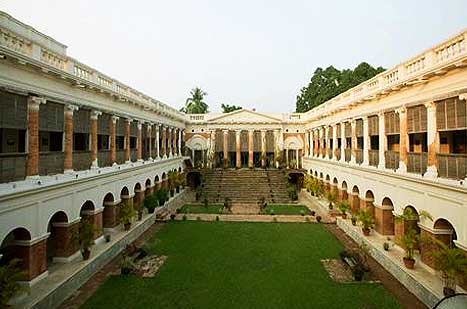
Bawali Rajbari 
Sometime during early 17th century, Basudeb Ray a prominent official of the Mughal Court of Emperor Akbar was bestowed the land ownership of the area of Bawali. His descendant Harananda Mondal was one of the earliest to found the Zamindari at Bawali with the help of the Bawali tribesmen.
The illustrious Zamindari grew with its effective land reforms and trade partnerships with the British. The Mondals of Bawali soon became a name to be reckoned with amongst the Zamindars of Bengal. During their heyday, the Bawali Zamindars had built several magnificent terracotta temples in Bawali and adjacent villages.
Today, this 300-year old palatial Bawali Rajbari spread over three acres of land and graced by ponds and gardens is being meticulously renovated to become a heritage hotel. The Bawali Rajbari is built around a lush courtyard with Cornithian pillars lining the verandah.

Gopinath Jiu Temple 
The ruins of this nine-domed (Navratna) temple built in 1794 is one of the finest examples of Bengal’s temple architecture. Now in ruins, this temple is accompanied by a Jhulan Mancha, Rash Mancha and a Nat Mandir. It is said, that Rani Rashmoni’s famous Dakshineshwar Temple was inspired from this temple in Bawali.
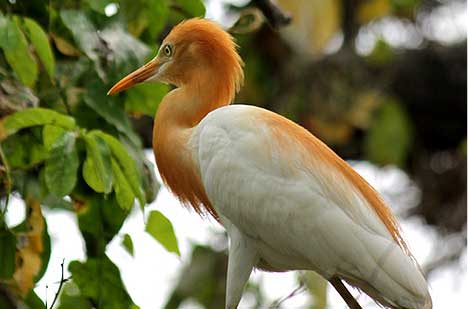
Burul Bird Sanctuary 
Burul is a riverside village just 15 kms from Bawali Farmhouse. Every year from July to September thousands of storks, cranes and commorants flock here to nest and raise their children. Burul becomes a bird watcher’s paradise during this season. A nesting site of this proportion is a rare sight so near to Kolkata.
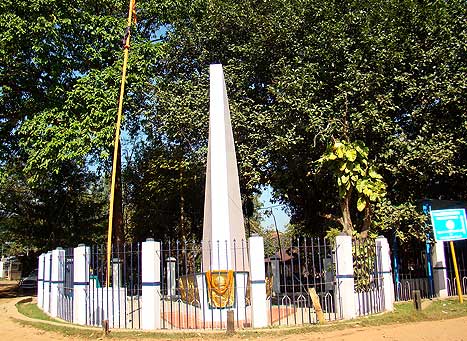
Komagata Maru Memorial Budge Budge 
Komagata Maru was a Japanese ship in which the Sikh nationalist Gurdith Singh was arrested for protesting against the Exclusion Laws in Canada in 1914. The passengers consisted 340 Sikhs, 24 Muslims and 12 Hindus – all British subjects.
In spite being British, they were not allowed to enter Canada and was sent back due to Exclusion Laws for British with Indian origins. Komagata Maru anchored in nearby Budge Budge and some trivial incidents caused indiscriminate police firing by the British soldiers, which caused the death of 20 nationalists and house arrest of many more. Often termed as the Budge Budge Riot, a memorial still stands on the banks of the Hooghly River remembering this massacre. Today, a memorial also stands in Vancouver, Canada from where Komagata Maru departed.

Boro Kachari 
At Boro Kachari pilgrims come in thousands to a wish-fulfilling sacred Peepal tree. Believers take a dip in the nearby pond and circumambulate the tree with deep devotion. New born babies are brought to the tree with wishes for their healthy and long life ahead.

Raipur Riverside 
The riverside road from Raipur to Burul is a magnificent drive along the banks of River Ganges (they call it Hooghly River here). This five kilometer stretch crosses few villages, piers and stooping Banyan trees along the river. Stop a while to witness fisherman casting their nets and the passing country boats and mammoth cargo vessels.

Vivekananda Memorial Budge Budge 
The nearby Ferry Ghat of Budge Budge greeted Swami Vivekananda in 1897 when he returned from his Chicago visit. Till date, this event is celebrated by the people of Budge Budge on 19th of February every year. The nearby Kali mandir can also be visited.
Bawali History 
The origin of the name “Bawali” is usually traced to a local tribe of the same name residing in this area around 500 years back. Being honey-collectors and wood cutters, the Bauli tribesmen were the earliest residents of this area. Another contradictory local folklore attributes the name to some Bawali Fakir who is said to have lived in these villages. However, no traces of his existence has ever been found in these areas.
Sometime during early 17th century, Basudeb Ray a prominent official of the Mughal Court of Emperor Akbar was bestowed the Zamindari of the area of Bawali. His decendant Harananda Mondal was one of the earliest to found the Zamindari at Bawali with the help of the Bawali tribesmen. The illustrious Zamindari grew with its effective land reforms and trade partnerships with the British. The Mondals of Bawali soon became a name to be reckoned with amongst the Zamindars of Bengal.
A temple-building frenzy soon ran amongst the Zamindars of Bawali and within 70 years a series of the finest temples of Bengal were built in and around Bawali. The Gopinath Jiu Temple built in 1794 with its nine-domes (Navratna) adorned with terracotta murals, the Radhakanta Jui Temple (1796), the Radhaballab Jiu temple (1813), the Shyamsundar Temple (1863) and many more Rashmanchas, Palaces, Jal Mahals, Dol Manchas and Nat Mandirs were built in this era. Though most of these temples are in ruins today, still Bawali hosts a 300-year old Rath Yatra of Manickchandra Mondal and the 200-year old Kalipuja, Charak and Goshto Yatra.
The nearby villages and towns of Bawali also has its fair share of some fascinating history like:
Budge Budge: Just 10 kms from Bawali, the nearby Budge Budge township’s facinating history dates back to 1756 when a local fort manned by the troops of Halders were defeated by Robert Clive’s forces. All ammunitions were brought to Fort William in Kolkata and the Budge Budge Fort was closed in 1793. The remains of the fort cannot be traced anymore. Budge Budge has witnessed some of the most fascinating events of Indian history like the homecoming of Swami Vivekananda from his Chicago visit in 1897. He landed at Budge Budge Ferry Ghat and boarded the train to Kolkata from the old station. Another event, to make a profound effect on the nationalist movement of India was the Komagata Maru incident also known as Budge Budge Riot in 1914. A Sikh nationalist Gurdith Singh with 19 other comrades were shot by the British Forces in his Japanese ship Komagata Maru while it docked in Budge Budge for protesting against the Exclusion Laws in Canada. A memorial still stands on the banks of the Hooghly River remembering this massacre.
Achipur: Achipur is a small riverside hamlet like many others in the vicinity but its claim to fame is due to the Chinese Temple built in 1718. Named after Tong Achew, a Chinese businessman who started a sugar factory after Governor General Warren Hastings handed some land to him. With Chinese immigrant workers, Tong Achew became a strong force in his business. The Chinese population of Kolkata owes its origins mostly to the workers and associates of Tong Achew. The tomb of Tong Achew and his Chinese Temple still stands at Achipur. Another intresting ruin is the Barood Ghar or the Gunpowder Godown located on the banks of River Ganges. During British rule, ships coming towards Kolkata from Bay of Bengal carrying gunpowder had to deposit their stock in these godowns located just beside River Ganges. Ships were only allowed to carry 100 lbs with them for emergency calls. While returning they would pick-up their stocks and sail back.





